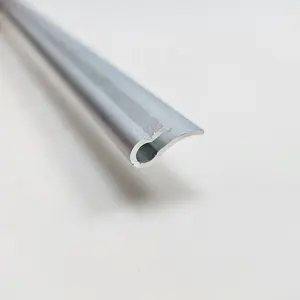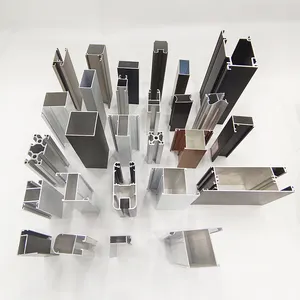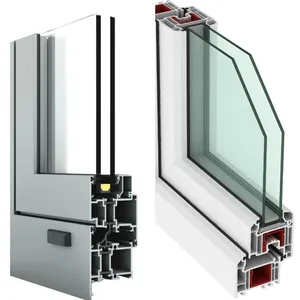Anodized Aluminium Profile: An Overview
An anodized aluminium profile is a versatile material widely utilized in various industries due to its durability and aesthetic appeal. This profile is an aluminum extrusion that has undergone an electrochemical process which increases its natural oxide layer, enhancing its corrosion and wear resistance. The result is a robust component that stands up to diverse environmental conditions while providing a sleek, modern finish.
Types and Shapes of Anodized Aluminium Profiles
Anodized aluminium profiles come in an array of shapes to cater to different structural and aesthetic needs. Common forms include L-angled, square, and T-shaped bars, each serving a unique purpose in construction and design. Hollow and solid round tubes are often employed in plumbing and framing systems, while specialized shapes like J caps, Z clips, and channels are integral to the assembly of complex structures.
Applications and Features
The application of anodized aluminium profiles is extensive, ranging from office furniture frameworks to intricate lighting fixtures. Their adaptability makes them suitable for automotive parts, where durability is crucial, and interior design, where the finish can complement the aesthetic. The anodizing process not only adds to the material's lifespan but also allows for a variety of colors, enhancing its application scope.
Material Specifications and Customization
Typically crafted from 6000 series aluminum alloy, these profiles boast a temper range of T3 to T8, indicating their strength and ductility. The standard thickness can vary from 0.2mm to 20mm, but customization options are available to meet specific project requirements. This flexibility ensures that the anodized aluminium profiles can be tailored to the precise needs of any application.
Surface Treatment and Advantages
Surface treatments for anodized aluminium profiles include powder coating, PVDF coating, and sandblasting, among others. Each method offers its own set of benefits, such as improved corrosion resistance or a desired aesthetic finish. Anodizing allows for a range of color options, while wood grain finishes can mimic the texture of real wood, ideal for decorative purposes.
Choosing the Right Anodized Aluminium Profile
Selecting the appropriate anodized aluminium profile involves considering the intended use, environmental conditions, and desired longevity. With a multitude of configurations and finishes available, these profiles can be an excellent choice for a myriad of projects. Browsing through the selection on Alibaba.com, buyers can find the profiles that align with their specific needs without the influence of brand promotion.


































 浙公网安备 33010002000092号
浙公网安备 33010002000092号 浙B2-20120091-4
浙B2-20120091-4